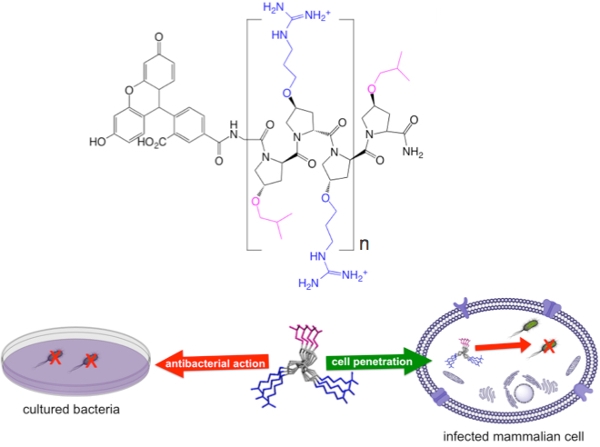Cell-Penetrating Antibiotics
Targeting Intracellular Pathogenic Bacteria
A significant challenge in the development of effective antibacterial agents arises from bacterial pathogens, including Mycobacterium tuberculosis, Salmonella, Brucella, Listeria, Shigella, and methicillin-resistant S. aureus (MRSA), that have evolved to inhabit mammalian cells, such as phagocytic macrophages. Within these intracellular safe havens the bacteria reproduce and form a repository, often causing chronic infections. Infected patients become life-long carriers of the pathogens, and chronically suffer from the infection or die from invasive forms of the pathogen. Whereas these pathogenic bacteria are internalized within macrophages, many of the commonly used classes of antibiotics, such as aminoglycosides, glycopeptides and macrolides, do not effectively accumulate within these cells. As such, the therapeutic value of many antibiotics against intracellular bacteria is severely limited. We have developed a unique class of cell penetrating peptides that have intrinsic antimicrobial activity. These agents, composed of cationic amphiphilic polyproline helices (CAPHs) have been shown to effectively target intracellular bacteria, such as Mycobacterium, Salmonella and Brucella. CAPHs are non-membrane lytic, are not prone to proteolysis and are broad spectrum antibiotics, with efficacy against pre-formed biofilms.
